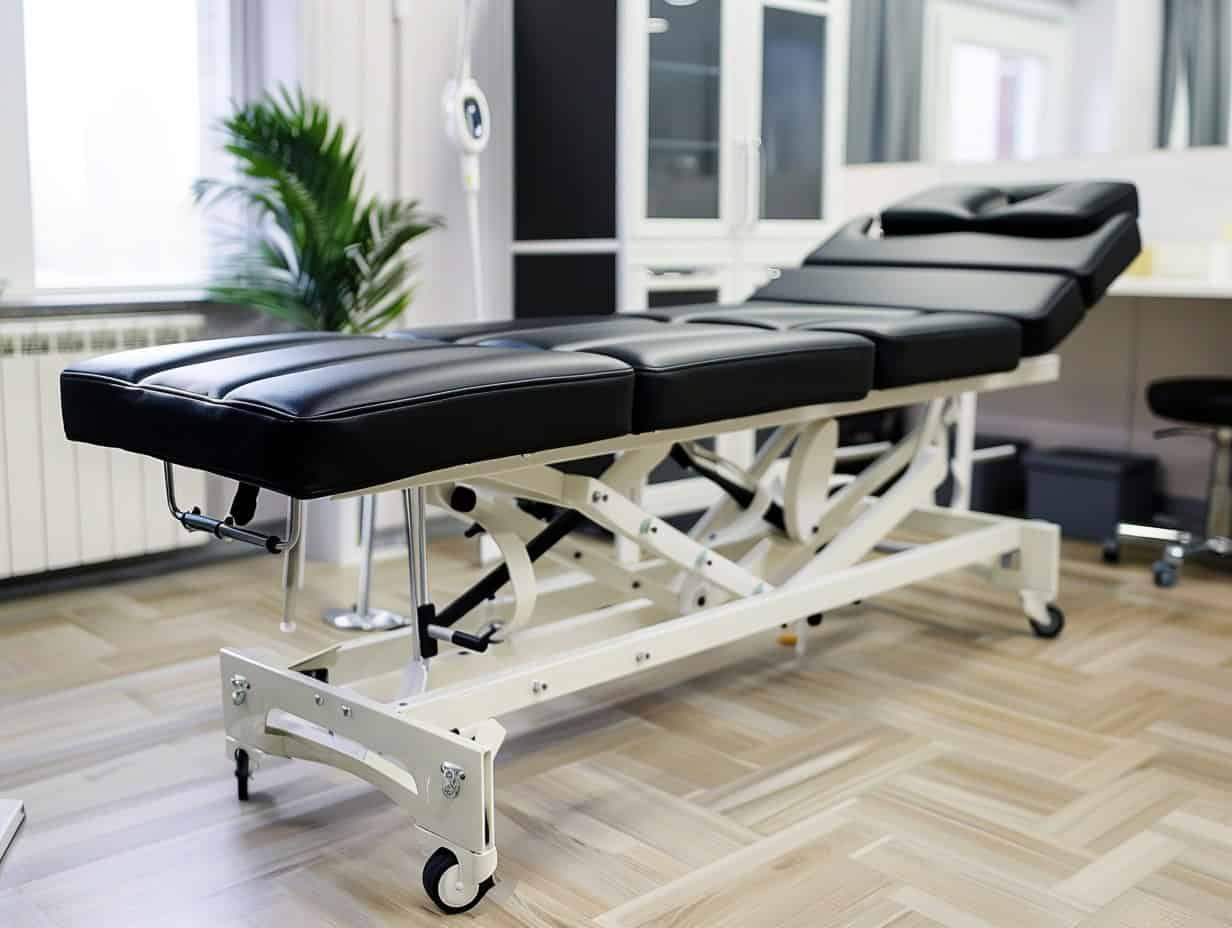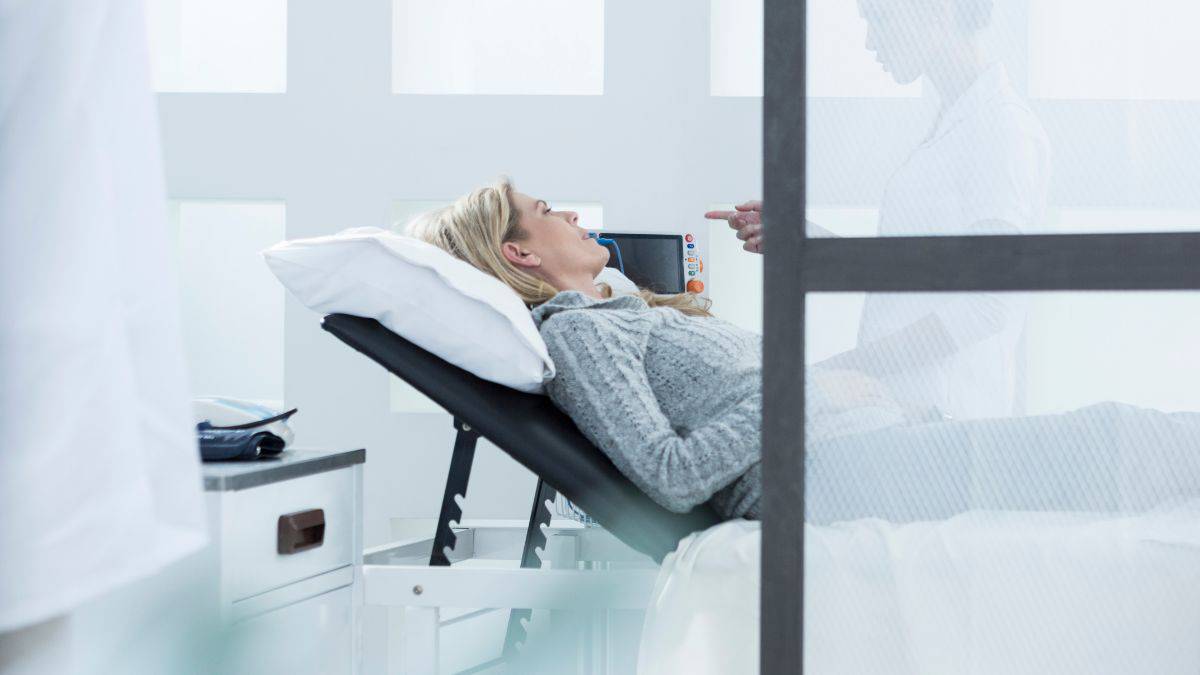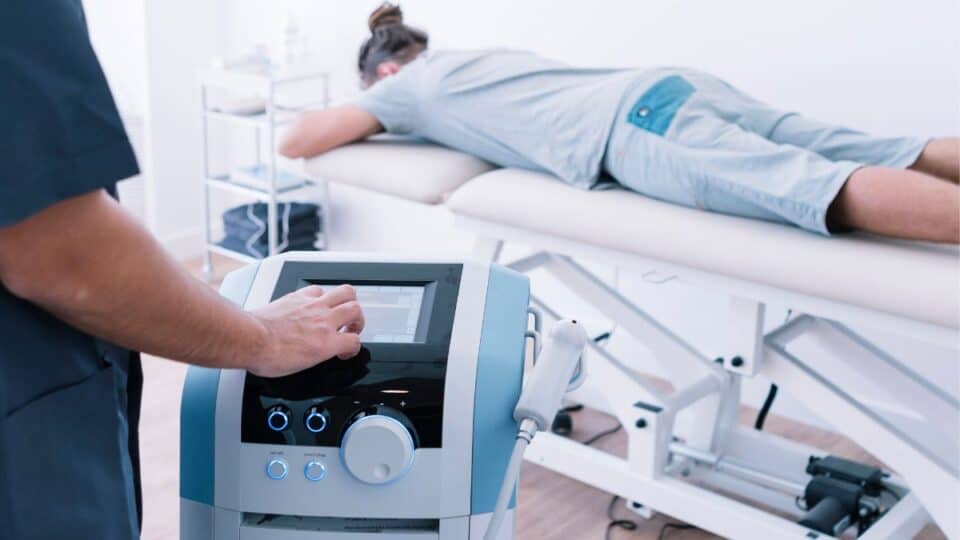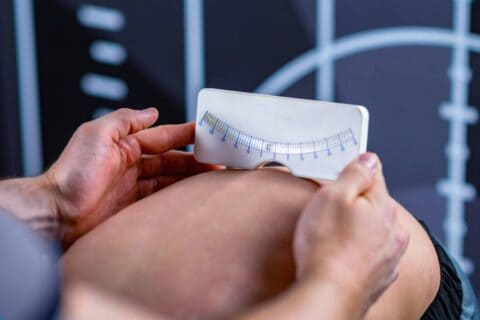Today, we’re diving into a topic that’s been causing quite a stir in the world of spinal care: decompression tables vs traction tables.
You see, I’ve noticed a trend lately. Many of our patients come to us confused about the treatments they’ve been offered elsewhere. They’re told they’re getting spinal decompression within their insurance coverage, but in reality, they’re receiving traction therapy. It’s like ordering a gourmet burger and getting a fast-food patty instead! So, let’s clear up this confusion and explore why decompression tables are the real MVPs in the game of back pain relief.
Key Takeaways
- Spinal decompression tables offer more gentle, precise, targeted treatment than traction tables
- Decompression therapy can effectively treat various spinal conditions with minimal side effects
- Understanding the differences between these treatments is crucial for making informed decisions about your spinal health
Table of Contents
- Understanding Spinal Decompression Tables
- Exploring Traction Tables
- Key Differences Between Decompression and Traction Tables
- Effectiveness and Research
- Client Testimonials
- Patient Considerations and Safety
- The Role of Complementary Therapies
- Technological Advancements and Future Trends
- Choosing the Right Treatment
- Patient Success Stories
- FAQs
- Conclusion
Understanding Spinal Decompression Tables
Let’s start with the star of the show: spinal decompression tables. These high-tech marvels are like the Tesla of spinal treatment equipment. They use state-of-the-art computerized control systems that allow for incredibly precise and customizable treatments.
The magic of decompression tables lies in their ability to create negative pressure within the spine. This vacuum-like effect gently separates the vertebrae, taking pressure off pinched nerves and allowing bulging or herniated discs to retract. It’s like giving your spine a much-needed vacation from the daily grind of gravity!
Some key benefits of spinal decompression therapy include:
- Targeted treatment for specific spinal segments
- Improved nutrient flow to damaged discs
- Non-invasive relief for conditions like sciatica and degenerative disc disease
Is SpineMed Your Path to a Pain-Free Life?
Tired of living with back pain? Take our quick quiz to see if you’re a candidate for the breakthrough SpineMed Treatment. It only takes a few minutes to potentially change your life.
Exploring Traction Tables
Now, let’s talk about traction tables. These are like the well-meaning but slightly outdated cousin of decompression tables. Traction therapy has been around for ages, and it does have its merits.
Traction tables work by applying a steady or intermittent pulling force to the spine. This can be done manually (imagine a very strong massage therapist) or mechanically (picture a medieval stretching rack, but much gentler and more comfortable).

Traction can be beneficial for:
- Improving overall spinal mobility
- Addressing certain types of neck and back pain
However, it’s important to note that traction is a bit like using a sledgehammer to crack a nut. It affects the entire spine rather than targeting specific problem areas.
Key Differences Between Decompression and Traction Tables
Now, let’s get to the juicy part – what sets these two treatments apart? Here’s a handy comparison table to break it down:
| Feature | Decompression Tables | Traction Tables |
|---|---|---|
| Technology | Computerized control systems | Manual or basic mechanical systems |
| Precision | Highly specific targeted treatment | General spinal stretching |
| Force Application | Cyclic, varied force | Steady or intermittent pulling |
| Patient Positioning | Customizable for specific conditions | Limited positioning options |
| Treatment Duration | Typically 30-45 minutes | Often shorter sessions |
Understanding Spinal Treatments: Decompression vs. Traction
In the world of spinal care, two terms often cause confusion: traction and spinal decompression. While both aim to treat spinal issues such as disc protrusions, herniations, and sciatica, they differ significantly in their approach and effectiveness.
The Shared Goal
Both traction and spinal decompression work on the principle of creating space within the spine, specifically in the cervical or lumbar regions. This separation aims to relieve pressure on nerves and promote the healing of damaged discs.
Key Differences
- Technology and Application
- Traction: Uses a basic rope and pulley system, applying a steady or intermittent pulling force. Very outdated.
- Spinal Decompression: Employs advanced computerized control systems for precise, targeted treatment. Our SpineMed table locks you safely into the machine without a rope and pulley system.
- Precision and Control
- Traction: Applies force non-specifically to the entire spine, often more aggressively.
- Spinal Decompression: Offers precise control, allowing for the targeting of specific disc levels by adjusting table angles and force application. Our machine is so sneaky that you don’t even feel the pulling and that’s on purpose.
- Treatment Experience
- Traction: Can be uncomfortable and may cause muscle flare-ups due to aggressive pulling. This is a big one we see because the spine doesn’t like to much pulling at one given time.
- Spinal Decompression: Generally more comfortable, with adaptive technology that can detect and respond to muscle guarding which is why it moves in cyclical pattern. Think of an accordion instrument.
- Effectiveness
- Traction: Shows mixed results in research, with limited effectiveness for complex spinal issues.
- Spinal Decompression: Demonstrates higher success rates, especially for conditions like herniated discs and sciatica.
The BodyFix Recommendation
While both treatments have their merits, the SpineMed Decompression Protocol stands out as the gold standard for most patients seeking effective spinal care. Its cutting-edge technology offers unparalleled precision and comfort, backed by impressive clinical results.
With SpineMed, we can pinpoint and treat specific spinal segments with remarkable accuracy, fine-tuning treatment parameters in real-time for optimal results.
This level of customization not only enhances the therapy’s effectiveness but also significantly reduces the risk of side effects. Patients consistently report faster relief and longer-lasting improvements, making SpineMed the clear choice for those serious about overcoming their spinal issues and reclaiming their quality of life.
A Word of Caution
Be aware that some clinics market traction therapy as “spinal decompression” when it doesn’t meet the criteria for true decompression therapy. Understanding these differences is vital in making an informed decision about your spinal health treatment.
Ready to experience true spinal decompression? Click here to schedule your free SpineMed consultation and discover the difference for yourself!
Effectiveness and Research
Spinal decompression therapy has been the subject of numerous studies, with many showing promising results. For example, a study published in the Journal of Back and Musculoskeletal Rehabilitation found that 86% of patients with herniated discs experienced significant pain reduction after decompression therapy.1
On the other hand, research on traction therapy has yielded mixed results2. While some studies show benefits for certain conditions, others suggest limited effectiveness compared to other treatments.
The bottom line? While both treatments can be helpful, the evidence tends to favor spinal decompression for more comprehensive and lasting relief.3
Client Testimonials
Patient Considerations and Safety
Let’s talk about keeping you safe and comfortable during treatment. Both spinal decompression and traction can be effective when done by experts, but they each have their own considerations.
With spinal decompression, we’re extra careful if you have conditions like severe osteoporosis or advanced disc disease. The real advantage here is precision – we can focus on specific areas of your spine without bothering others. Plus, modern decompression tables are pretty smart. They can sense if your muscles tense up and adjust automatically, which helps prevent strain.
Traction therapy has its place too, but it comes with a few more potential hiccups. Some folks might feel a bit sore afterward, and in rare cases, it could make symptoms worse if not done just right. The main drawback is that many traction devices are less customizable, so we can’t fine-tune the treatment as much.
Here’s the thing: spinal decompression therapy often boasts a higher comfort level and fewer side effects. Why? It’s all about that precise, computer-controlled force application. Imagine the difference between a tailored suit and a one-size-fits-all t-shirt – both cover you, but one fits a whole lot better!
Remember, your spine is as unique as you are. That’s why we always start with a thorough evaluation before recommending any treatment. We’re not just treating a back problem; we’re treating you – a whole person with individual needs and concerns.

The Role of Complementary Therapies
Here’s a pro tip: combining treatments can supercharge your results! In our practice, we often recommend complementary therapies alongside spinal decompression, such as:
- Our Unique Chiropractic method
- Class IV Laser Therapy
- Full Body Red Light Therapy
- Rehabilitation Exercise Program
- Xymogen Nutritional Supplements
This holistic approach addresses not just your spine, but your overall musculoskeletal health as well as other systems of your body. It’s like giving your body a complete tune-up, not just changing the oil!
Technological Advancements and Future Trends
The world of spinal care is constantly evolving, and I’m excited about the future! Recent innovations in decompression technology include:
- 3D imaging integration for more precise treatment
- AI-assisted treatment planning
- Virtual reality pain management during sessions
As for traction? Well, let’s just say it’s not exactly at the cutting edge of innovation. It’s a bit like comparing a flip phone to the latest smartphone – both can make calls, but one is clearly more advanced! We apologize for all the analogies but its very important for you to understand the difference as your health is of utmost priority.
Choosing the Right Treatment
So, how do you choose? Consider these factors:
- Your specific condition and symptoms
- Professional recommendations (like mine!)
- Your personal preferences and lifestyle
Remember, what works for your neighbor might not work for you. It’s all about finding the right fit for your unique spine!
Patient Success Stories
Don’t just take my word for it! I’ve seen countless success stories in my practice. Take one of my patients, for example. She came to me with chronic lower back pain that was affecting her ability to play with her kids. After a course of spinal decompression therapy, she’s back to running around the playground pain-free!
Or consider my other patient, a former traction therapy patient who switched to decompression. He saw more improvement in 6 sessions than he had in months of traction!
FAQs
How long does a typical spinal decompression session last?
Why should I choose a chiropractor for spinal decompression therapy?
How many sessions of spinal decompression therapy are typically needed?
Can spinal decompression replace the need for surgery?
How soon can I expect to see results from spinal decompression therapy?
Is SpineMed Your Path to a Pain-Free Life?
Tired of living with back pain? Take our quick quiz to see if you’re a candidate for the breakthrough SpineMed Treatment. It only takes a few minutes to potentially change your life.
Conclusion
Don’t settle for outdated technology when it comes to your spinal health. You deserve the best, most effective treatment available. Spinal decompression could be the game-changer you’ve been searching for to finally overcome your back pain and reclaim your quality of life.
Ready to experience the difference for yourself? Take the first step towards a pain-free life by scheduling a free consultation for SpineMed Treatment. Our expert team will assess your unique needs and create a personalized treatment plan just for you.
Click here to schedule your consultation and start your journey to a healthier, happier spine today!
Remember, your spine is the backbone of your well-being. Invest in its health with the most advanced, effective treatment available – choose spinal decompression therapy.
Blog Disclaimer: The information provided on The BodyFix Chiro blog is for general informational and educational purposes only and is not intended as medical advice. These articles reflect our opinions and experiences but should not be used to diagnose or treat any health conditions. Always consult with your physician, chiropractor, or other qualified healthcare provider before starting any new treatment, exercise program, or making changes to your health routine. Any actions you take based on information from this blog are entirely at your own risk, and The BodyFix Chiro and its contributors disclaim any liability for the decisions you make based on this information.






